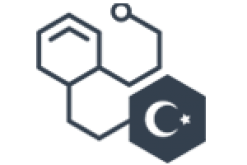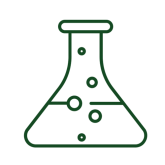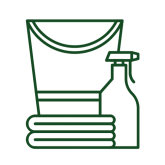CHEMICAL SAFETY ASSESSMENT (CSA)
Content addition date : 30-05-2025
The purpose of the KKDİK Regulation is to protect humans, other living beings and the environment from chemicals, to encourage alternative methods for assessing the hazards of substances, to increase competition and innovation in the market and to control chemicals. In this way, safe and sustainable products are made available in the market.
To ensure safety in the chemicals sector, a Chemical Safety Assessment (CSA) is carried out and a Chemical Safety Report (CSR) is prepared for substances that are produced and registered at 10 tons or more per year. If the substance is less than the threshold value specified according to the SEA Regulation and meets the specified criteria and the substance is less than 0.1% by weight, a chemical safety assessment is not required.
Chemical Safety Assessment (CSA):
Chemical safety assessment (CSA) involves the determination of the intrinsic hazardous properties of substances. This assessment process involves determining the harmful effects of substances according to their hazard classes and categories. It also involves assessing the potential hazards of a chemical substance and determining the measures necessary to control these hazards. Chemical safety assessment typically covers all stages of the substance's lifecycle, from production, storage, transportation, and use, to disposal. The goal of CSA is to provide a scientific basis for minimizing and managing the potential effects of chemical substances on human health, the environment, and other systems.
The Chemical Safety Assessment includes:
- physico-chemical hazard assessments,
- human health hazard assessments,
- environmental hazard assessments,
- PBT and vPvB assessment.
If the substance has PBT and vPvB properties or exhibits the hazards defined in Annex 1, exposure assessment and risk characterization stages are also added.
► Hazard Assessment: In this stage, the intrinsic hazard potential of the chemical substance is determined. The effects of the substances on human health and the environment are examined. Hazards are classified based on the toxicological, ecotoxicological, and environmental effects of the substances.
► Exposure Assessment: The extent to which different groups (such as workers, consumers, and the environment) are exposed to the substance in different use scenarios is evaluated. This helps to identify the pathways and levels of exposure.
► Risk Assessment and Characterization: Risk assessment is performed by combining hazard and exposure data. This stage identifies the potential risks of the chemical substance to human health and the environment and establishes measures to manage these risks.
► PBT and vPvB Assessment: For substances with PBT (Persistent, Bioaccumulative and Toxic) and vPvB (very Persistent and very Bioaccumulative) properties, a more detailed examination is carried out. These substances require special attention as they can persist in the environment and accumulate biologically.
► Risk Control Measures and Safety Report: In line with the results of the chemical safety assessment, the conditions of use of the substances are determined and necessary measures are established to control the risks. These measures are documented in the chemical safety report and filed in accordance with the relevant regulations.
CSA is conducted by a Chemical Assessment Specialist. If a substance is produced or imported in quantities of 10 tons or more per year, a chemical safety assessment (CSA) is required. This assessment is documented in a Chemical Safety Report (CSR) in accordance with KKDIK and submitted as part of the registration file. KKDIK Annex 1 contains general provisions for the assessment of substances and preparation of chemical safety reports. One of the main objectives of the CSA is to identify the conditions of use under which risks can be controlled.
CSA can vary depending on the exposure assessment, classification and labelling, risk assessment results, and the properties of the substance.
















